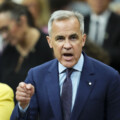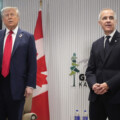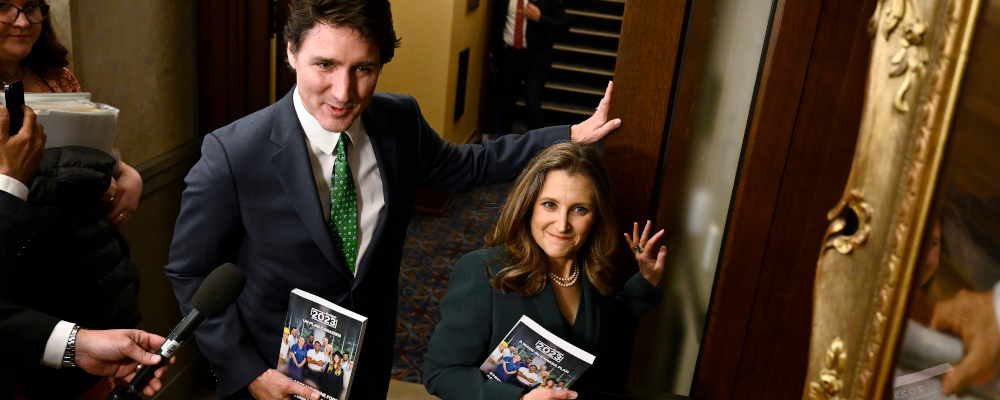This week, the Hub Forum had great discussions about immigration, housing affordability, the cultural importance of hockey, and how the Canadian Radio-television and Telecommunications Commission could kill Netflix in Canada in an attempt to “modernize” broadcasting.
The goal of Hub Forum is to bring the impressive knowledge and experience of The Hub community to the fore and to foster open dialogue and the competition of differing ideas in a respectful and productive manner. Here are some of the most interesting comments from this past week.
Sign up for our daily Hub Forum email newsletter today.
Canadians are turning against immigration. Labour economist Mikal Skuterud on how to reform the system and reverse this trend
Monday, November 13, 2023
“Politicians need to show leadership and end this. They need to give up ideology for good policy which will change the country for the better. They need to be able to pivot when it is demanded.”
— A. Chezzi
“Historically, immigrants have been willing to do work that many (most?) Canadians are unwilling to do, and still are. Where else can we find well-trained doctors from other countries willing to drive taxis here because our system is far too stupid to recognize credentials in this and other sectors desperately short of professionals?”
— James
“First it was Catholics, then Eastern and Southern Europeans. Then Asians and non-Christians. Each set of immigrants was made out to be the death of this country with their foreign ways and strange cultural practices. But yet somehow this country managed to grow and thrive. We are in the midst of another growth spurt and are experiencing all the growing pains that go with it.
Many people don’t want to acknowledge what has been mentioned in another post here. We are an aging society and we are not having enough children to replace our population so we need new, young people to move here. And Canada has tough immigration policies.”
— Michael F.
Doug Ford is blowing it on housing
Tuesday, November 14, 2023
“We need immigration to maintain our economy.
The broad question is how much immigration is optimal and how can the infrastructure and society itself by prepared for the planned levels. Housing is a clear example of the supply not being aligned with the demand. Coordination of three levels of government that have distinct powers over different aspects of the many factors and short-term political incentives make this a very difficult problem to pin down, let alone solve.
Premier Ford seems to be the epitome of a short-term political reactionary. As a leader, doing the correct thing can be hard in the face of public, or lobbyist/friend, pressure, especially if the benefits are not felt/recognized until after the next election.
Housing is a prime example of government coordination failure. It could be the example, hopefully a shining one, of determined and effective government collaboration (even if only two of the three levels) in addressing a significant and acute problem despite the citizen NIMBYism.”
— Rob Tyrrell
“Anything that helps streamline the planning and approval process for new housing would be a step in the right direction. As long as city planners are rewarded for their caution and delay, we will be playing catch-up with immigration for years, if not decades. If all levels of government truly wanted to ‘solve’ this, they could. This is one issue we already know how to fix.”
— Tom
Fewer kids than ever are playing hockey. What does this mean for Canada’s national identity?
Wednesday, November 15, 2023
“Gone are the days, when I was a kid, that we had lots of local outdoor rinks, and lots of pickup games, which allowed a lot of kids to easily access the game. Add to that, in today’s economy, with high inflation, too many families are struggling just to pay for housing, food, gas, heating, etc., and hockey becomes a luxury they cannot afford. With respect to immigrants, and other nonwhite communities, with all due respect, in most cases, I would suggest that they, and their parents, just weren’t brought up playing hockey. Some want to assimilate into the Canadian way of life and get their kids involved in ‘Canadian’ sports, but many just have no interest, and are not going to be attracted to a sport that is expensive to get into and outside their culture.”
— Dave Collins
“Cost is definitely an issue and I see it around the area I live in—some cities subsidize recreational sports by providing cheap/at-cost access to facilities like arenas, courts, fields, pools, etc., and participation is booming because a whole season costs a couple hundred dollars. But there’s also a cumulative effect, the kids who grew up here playing hockey/swimming/etc. are raising their kids here now and volunteering to keep the tradition going (and some have impressive pedigrees that got their start from within the community).
New communities need to be built around community facilities—parks, pools, fields, courts, arenas, etc. all need to be part of the plan.”
— Toby Hemingway
“I would concur with the costs being prohibitive. House league can be reasonable if you buy used equipment or exchange as your kid grows, but once they show any aptitude for the sport, they will be pushed or drawn into trying out for select teams and then rep teams. Once you hit that rep level you are into thousands and thousands of dollars per kid. My wife and I routinely ask each other ‘How do some families afford this?'”
— Maclean Graydon

Canada has a serious fiscal challenge looming as the federal debt explodes
Thursday, November 16, 2023
“I like the comparison to 1995 having lived through that time. It is also good to understand that serial deficit spending is a global issue. For those aiming to replace the current very tired government I would suggest the following slogan ‘Spend wisely, Save more.’”
— Doug Lee
“Canada cannot solve our deficit problem by taxing a lot more without damaging our economic competitiveness. At the end of the day everyone, including governments, must live within their means.”
— GH
How the CRTC could kill Netflix in Canada—All in the name of ‘modernizing’ broadcasting
Friday, November 17, 2023
“The government should stop interfering with broadcasting, stop protecting media companies at the cost of the public wants/needs, and focus on issues that the people of Canada actually want their help with, like housing and affordability.”
— Michelle Webber
Recommended for You

Kirk LaPointe: B.C.’s ferry fiasco is a perfectly Canadian controversy

‘I want to make Canada a freer country’: Conservative MP Andrew Lawton talks being a newbie in Parliament, patriotism, and Pierre Poilievre’s strategy

The Notebook by Theo Argitis: Trump halts trade talks, Carney’s trade-offs and John McCallum’s legacy

The Weekly Wrap: The Liberals must abandon their internet regulation agenda



